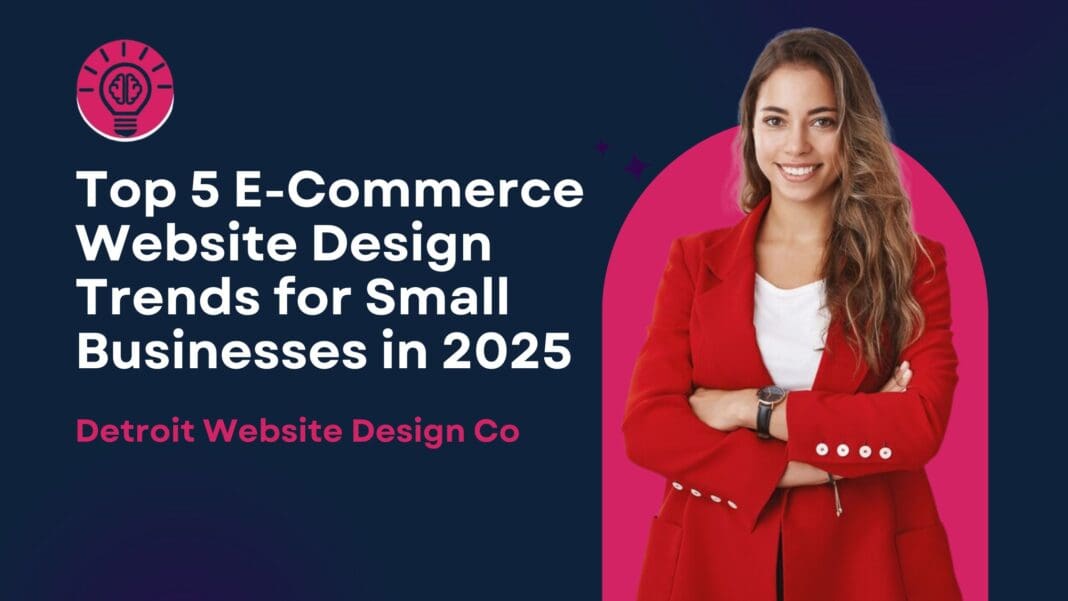In the ever-evolving world of e-commerce, staying ahead of design trends is crucial for small businesses to stand out and increase conversions. As we step into 2025, new technology, user expectations, and design aesthetics are shaping the online shopping experience. If you want your e-commerce site to attract more customers, keep them engaged, and boost sales, embracing these emerging e-commerce website design trends is a must.
In this guide, we’ll explore the top 5 e-commerce website design trends for 2025, and how small businesses can incorporate these trends to stay competitive in a crowded marketplace.
1. Mobile-First Design Becomes Even More Critical
With mobile shopping continuing to rise, mobile-first design is no longer optional—it’s essential. In 2025, more consumers are expected to make purchases on their smartphones, and your website needs to be optimized for this shift.
Why it matters:
- Increased mobile traffic: As mobile usage continues to dominate, small businesses must ensure their websites deliver a seamless experience on mobile devices.
- Improved user experience: A mobile-optimized website provides better navigation, faster loading times, and an easier checkout process on smartphones and tablets.
Actionable Tip: Prioritize mobile-responsive design from the start. Use larger buttons, simplified navigation, and mobile-friendly checkout features to make the shopping experience as smooth as possible for mobile users.
2. AI-Powered Personalization for Better Customer Engagement
Artificial Intelligence (AI) is transforming how businesses approach customer engagement. In 2025, AI-powered personalization will be one of the leading trends in e-commerce website design. By tailoring the shopping experience to each individual user, small businesses can boost conversions and customer loyalty.
Why it matters:
- Enhanced customer experience: Personalization makes shoppers feel like the website understands their preferences, leading to higher satisfaction and more sales.
- Increased conversion rates: By recommending products based on browsing behavior or previous purchases, AI-driven recommendations can increase the likelihood of a purchase.
Actionable Tip: Implement AI tools that analyze customer behavior and recommend products based on their preferences. Personalized email campaigns and dynamic landing pages can also improve engagement and drive repeat purchases.
3. Interactive and Engaging Product Pages
Gone are the days of static product pages with only a few images and a description. In 2025, interactive product pages will become a key design trend that enhances user engagement and boosts conversions.
Why it matters:
- Higher engagement: Interactive product pages, such as 360-degree views, videos, or augmented reality (AR) features, keep customers engaged and encourage them to explore products in more detail.
- Increased confidence: Interactive features give shoppers a better understanding of the product, leading to greater confidence in making a purchase.
Actionable Tip: Add 360-degree product views, zoomable images, and video demonstrations to your product pages. If possible, incorporate AR features that allow customers to visualize the product in real life, such as seeing how furniture looks in their home.
4. Sustainable and Eco-Friendly Design Elements
As consumers become more environmentally conscious, small businesses are expected to integrate sustainable and eco-friendly design elements into their e-commerce websites. This trend focuses on using design to reflect a brand’s commitment to sustainability.
Why it matters:
- Consumer preference: More shoppers are actively looking to support businesses that share their values, including eco-conscious brands.
- Brand differentiation: A commitment to sustainability can set your brand apart and attract a growing base of environmentally-minded customers.
Actionable Tip: Use eco-friendly colors, imagery, and messaging on your website that highlight your commitment to sustainability. You can also incorporate sustainable product labels, carbon offset programs, or packaging information on product pages to align with customers’ green values.
5. Faster, Streamlined Checkout Process
One of the most critical elements of an e-commerce website design is the checkout process. In 2025, customers will expect a faster and more streamlined checkout experience, with options like one-click purchasing, auto-filled forms, and a variety of payment methods.
Why it matters:
- Reduced cart abandonment: A complicated or lengthy checkout process is one of the main reasons customers abandon their carts.
- Improved customer satisfaction: A faster, simpler checkout leads to happier customers who are more likely to complete their purchase and return in the future.
Actionable Tip: Simplify your checkout process by minimizing the number of steps and forms required to complete a purchase. Offer a variety of payment methods, such as digital wallets (Apple Pay, Google Pay), Buy Now, Pay Later options, and multiple credit card options to accommodate different customer preferences.
Conclusion: Stay Ahead with These E-Commerce Website Design Trends
As we move into 2025, small businesses must adapt to the latest e-commerce website design trends to remain competitive and attract more customers. By embracing mobile-first design, AI-powered personalization, interactive product pages, sustainable design, and a faster checkout process, you can enhance your website’s user experience, build customer loyalty, and increase conversions.
At Detroit Website Design Co, we specialize in helping small businesses stay ahead of the curve with cutting-edge e-commerce website design. If you’re looking to revamp your online store to reflect these trends, contact us today and let’s create a site that drives more sales and provides an exceptional shopping experience for your customers.








